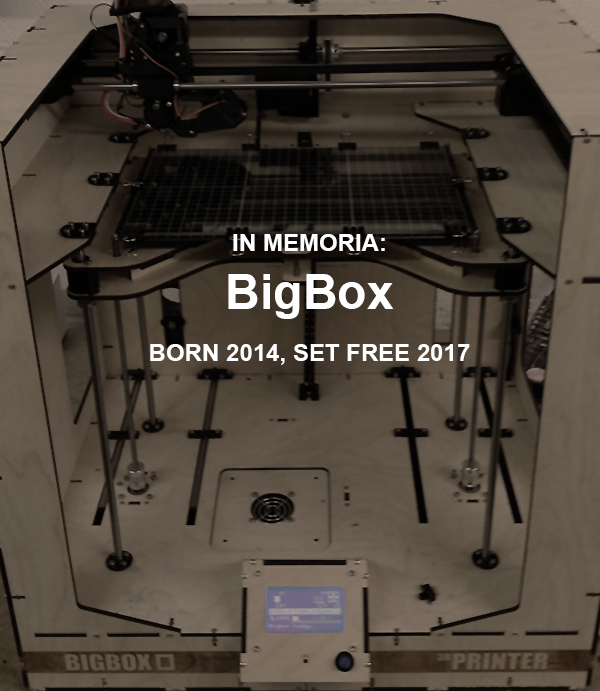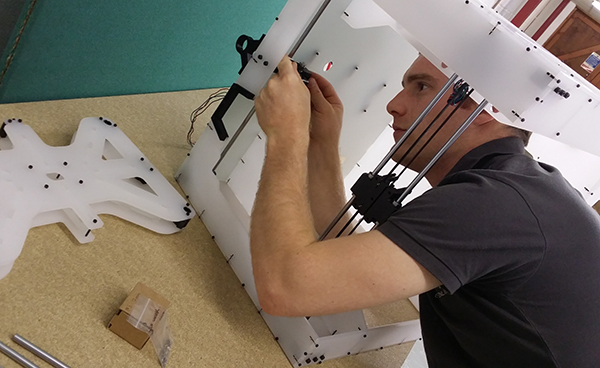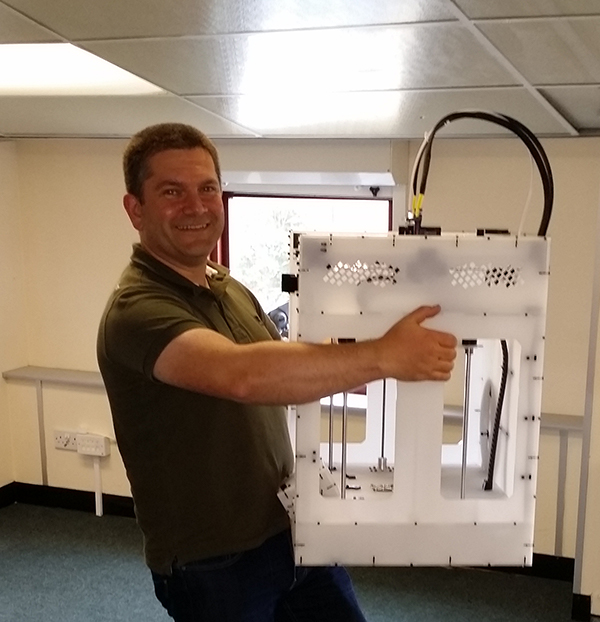
The highly anticipated BigBox 3D printer project has ceased production, providing a wealth of advice for others contemplating marketing 3D printers.
A collaboration between well-regarded UK 3D printer accessory maker E3D-ONLINE and LittleBox, BigBox was a very promising open source desktop 3D printer project that began in 2014. At the time, the design included features not typically found on desktop 3D printers: productivity enhancements – and a really huge (at the time) build volume of 300 x 300 x 300mm.
The combination of great features and the reputation of the partners was irresistible to Kickstarter backers, who ordered over 300 units, vastly more than the project anticipated.
You might think it’s successful to sell more units, but in fact, this is what doomed the promising BigBox project. They’ve posted a very detailed explanation of what happened on the E3D site, but summarizing the problems is as follows:
- The number of units ordered exceeded the capacity of their manufacturing equipment
- The number of units ordered demanded more part storage and assembly space than they had available
- The huge number of components required far more assembly labor
- Organizing the logistics of labor, parts and orders required hiring a project manager at additional expense
- User support requirements were underestimated
- Component suppliers delayed shipments
- Ongoing design changes vastly complicated the parts inventory and assembly processes
- Shipment packaging was inadequate to properly protect the units, which were damaged and had to be replaced at no charge
- Differences in the prototype and production models introduced new problems that had to be solved
- Components received were not correct and had to be re-ordered

All of this resulted in not only delays, but a recognition that the price of the machine was too low to account for expenses. To their credit, apparently E3D stepped up and funded the gaps to ensure the original backers actually ended up with their BigBoxes, but in the end it proved the project was not logistically nor financially feasible. Even worse, the delays pushed the project into a new era where more advanced competing models have become available, sometimes at low price points.
As a result, the partners decided to cease production of the BigBox. Meanwhile, they’ve set up appropriate methods to support the users who did receive their BigBox for the foreseeable future, which again, is great credit to these parties. Other ventures might have simply walked away from the project, leaving the backers without support.

I strongly encourage everyone who is remotely contemplating launching a 3D printer manufacturing project to read this detailed explanation of their unfortunate scenario.
The key lessons here are, as I see it, the following:
- Manufacturing quantities of machines is FAR MORE DIFFICULT AND DIFFERENT than making prototypes
- Bad things ALWAYS happen; plan for contingencies
- Bad things can be minimized by keeping the project as simple as possible
- Have sufficient funding to cover delays and issues, or have a partner that can assist
- Match your manufacturing capacity to the number of units sold, even capping your sales if necessary
And finally: Make absolutely certain you know what you’re doing before you commit to customers.
If things blow up as they appear to have done so with BigBox, please use BigBox as a model of how to do so gracefully.
Via E3D (Hat tip to Shachar)

